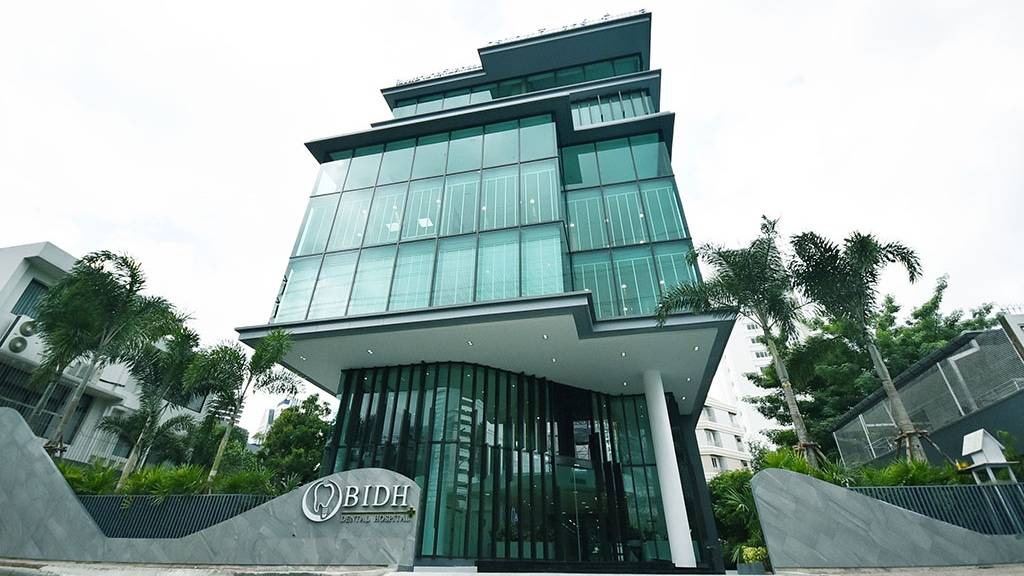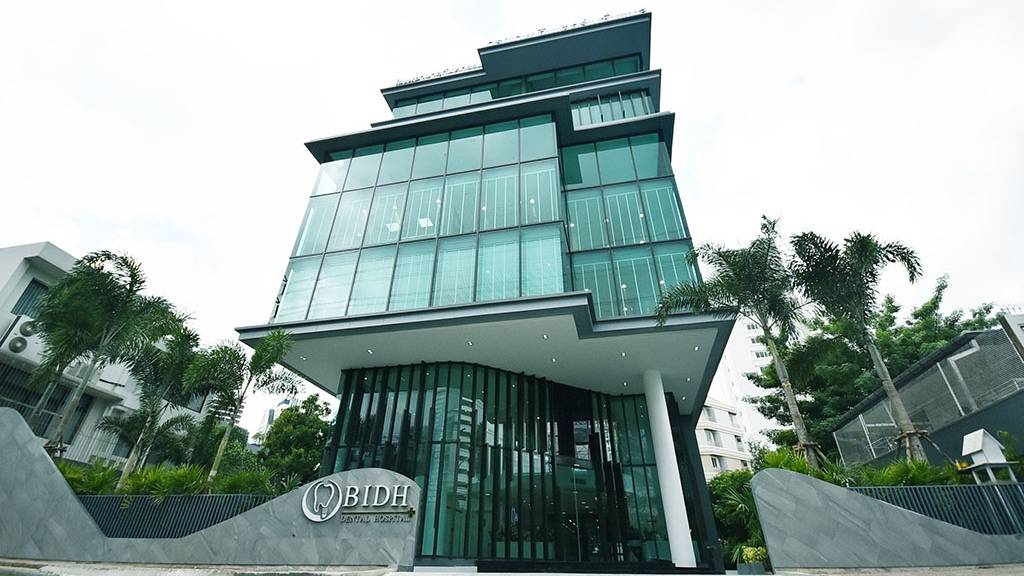It Is Suitable For
· Those in Bangkok looking to replace a missing front tooth.
· Those with healthy adjacent teeth and good oral hygiene.
· Those who want to get a non-invasive, conservative option.
· Those who wish to get a temporary or semi-permanent solution.
· Those who wish to avoid tooth grinding or surgery.
What Is Maryland Dental Bridge?
Maryland Dental Bridge is a type of fixed dental restoration used to replace a missing tooth – commonly in the front of the mouth. Unlike traditional dental bridges, it does not require reshaping the adjacent teeth. Instead, the false tooth (pontic) is held in place by wings or frameworks that are bonded to the back surfaces of the neighbouring teeth. It is also known as a resin-bonded dental bridge, and is considered a minimally invasive and conservative option for suitable cases.
How It Works
Maryland Dental Bridge consists of a pontic (false tooth) made of ceramic or porcelain fused to metal, with thin metal or ceramic wings on either side. These wings are bonded to the inner (lingual) surfaces of the adjacent teeth using a strong dental adhesive, providing support without the need to grind down healthy teeth. This makes it ideal for replacing a single front tooth, where the bite pressure is lower.
Maryland Dental Bridge Procedure
1. Consultation and assessment will be conducted.
2. Minimal or no tooth preparation will be done.
3. Digital scan or impression will be taken.
4. The dental bridge will be tried in and bonded.
5. Post-care instructions will be provided.
Advantages and Limitations of Maryland Dental Bridge
<Advantages>
· Preserves healthy tooth structure
· Minimally invasive
· Ideal for front teeth
· Quick procedure and shorter recovery time
· Can be used as a temporary or long-term solution
<Limitations>
· Not suitable for back teeth
· May not match natural tooth translucency perfectly
Maryland Dental Bridge Post Care
· Gently brush and floss your teeth as usual to keep the area clean
· Stick to a soft diet and avoid sugary or acidic foods for at least 24 hours after the procedure
· Avoid biting or chewing on hard or sticky foods for at least 1 days after the dental bridge is placed
FAQ
Q1: How long will Maryland Dental Bridge last?
A1: Maryland Dental Bridge can last 5 to 10 years, depending on oral hygiene, bite force, and how well it is maintained.
Q2: What is the downside of Maryland Dental Bridge?
A2: The main downside is that the dental bridge can loosen or debond over time, especially in areas with strong bite pressure.
Q3: Can I eat normally with a Maryland Dental Bridge?
A3: Yes, but you should avoid very hard or sticky foods, especially in the first few days after placement.
Q4: Is Maryland Dental Bridge better than an implant?
A4: It depends. Maryland Dental Bridge is less invasive and faster, but a dental implant is more durable and stable for long-term use.
Q5: Does Maryland Dental Bridge look natural?
A5: Yes, Maryland Dental Bridge is designed to blend in with your natural teeth, especially when made with all-ceramic materials.
Clinic Information
[Clinic Name] Bangkok International Dental Hospital
[Location] Bangkok, Thailand
[Nearest Station/ Nearest Tourist Destination] Approximately 5 to 10 minutes walking distance from Ploenchit Station (BTS Exit 4) and from Nana Station (BTS Exit 2)
[Clinic Opening Time] Monday to Saturday (9:00AM - 8:00PM); Sunday (9:00AM - 6:00PM)
| Operation Time |
45 - 60 mins |
| Recovery Time |
None |
| Number of Postoperative Visit |
Not required |
| Hospitalization |
Not required |
| Limitations |
· Mild tooth sensitivity or gum irritation may occur
· Risk of the bridge loosening or debonding |
| Cancellation Policy |
No charge for cancellations made at least 48 hrs prior appointment date* |
| Location |
98 Sukhumvit Soi 2, Khlong Toei, Ploenchit area, Bangkok 10110 |
Terms of Service
Trambellir is a health tourism platform and does not in any way provide, promote, or sell any
medication or medical treatment to the Customers.
Customers are advised to contact the healthcare providers directly for any enquiries related to
medical treatments.






